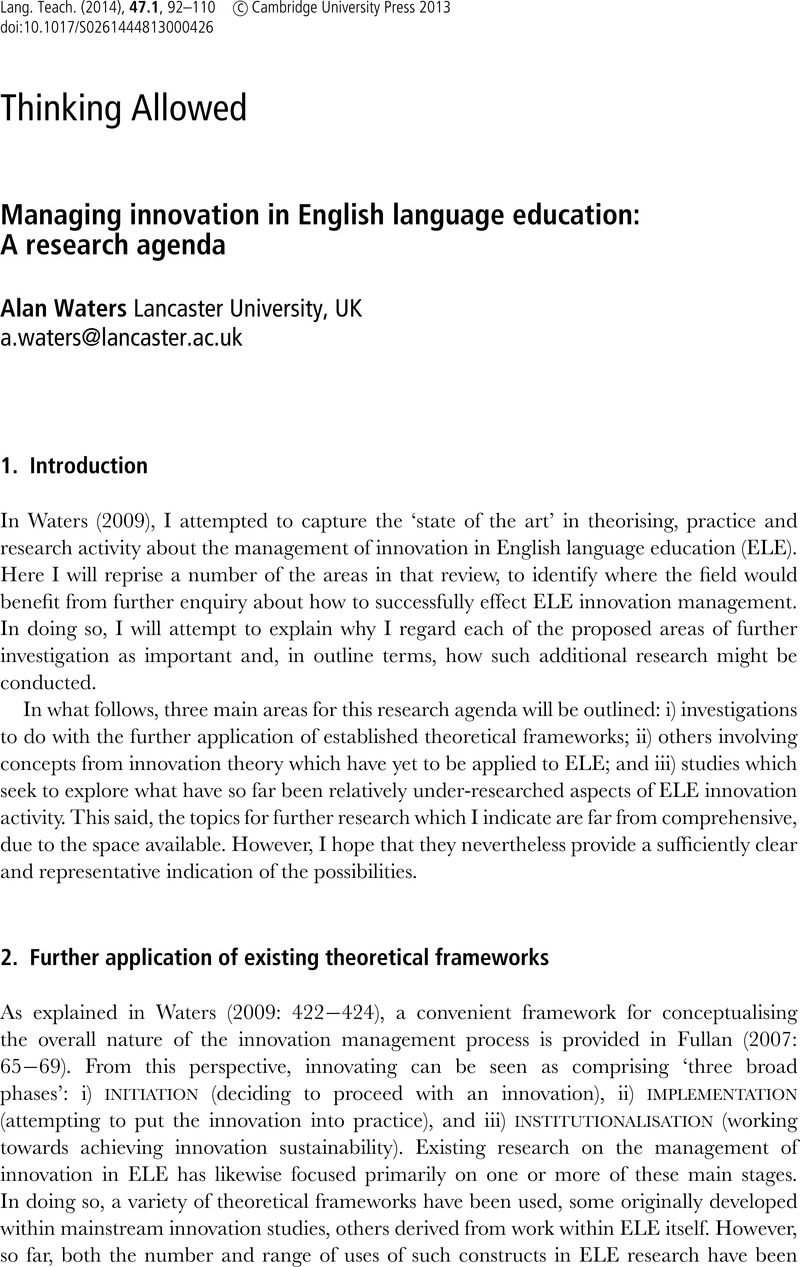Crossref Citations
This article has been cited by the following publications. This list is generated based on data provided by Crossref.
White, Cynthia
2014.
The distance learning of foreign languages: A research agenda.
Language Teaching,
Vol. 47,
Issue. 4,
p.
538.
Martel, Jason
and
Bailey, Kathleen M.
2016.
Exploring the Trajectory of an Educational Innovation: Instructors’ Attitudes Toward IPA Implementation in a Postsecondary Intensive Summer Language Program.
Foreign Language Annals,
Vol. 49,
Issue. 3,
p.
530.
Kostoulas, Achilleas
and
Stelma, Juup
2017.
Understanding curriculum change in an ELT school in Greece.
ELT Journal,
Vol. 71,
Issue. 3,
p.
354.
Rose, Heath
and
Galloway, Nicola
2019.
Global Englishes for Language Teaching.
Thanh, Trinh Ngoc
2019.
Technology-Assisted ESL Acquisition and Development for Nontraditional Learners.
p.
63.
Wedell, Martin
and
Grassick, Laura
2020.
The Encyclopedia of Applied Linguistics.
p.
1.
Galloway, Nicola
and
Numajiri, Takuya
2020.
Global Englishes Language Teaching: Bottom‐up Curriculum Implementation.
TESOL Quarterly,
Vol. 54,
Issue. 1,
p.
118.
Li, Juan
and
Ning, Xin
2022.
A Recommendation Model for College English Digital Teaching Resources Using Collaborative Filtering and Few-Shot Learning Technology.
Computational Intelligence and Neuroscience,
Vol. 2022,
Issue. ,
p.
1.
Sebolai, Kabelo
and
Stoller, Fredricka L.
2023.
English Language Program Administration.
Vol. 59,
Issue. ,
p.
83.
Du, Hongmei
Zheng, Pinsu
and
Cao, Yuanyuan
2024.
Innovation and Application of English Teaching Mode in Colleges and Universities by Integrating Entropy Power-Cloud Modeling.
Applied Mathematics and Nonlinear Sciences,
Vol. 9,
Issue. 1,
Cameron, Andrew
and
Galloway, Nicola
2024.
Generational Gatekeepers: Parental Impediments to Global Englishes Language Teaching.
International Journal of Applied Linguistics,
Jennings, Stephen
2024.
Academic Performance - Students, Teachers and Institutions on the Stage.
Vol. 21,
Issue. ,



